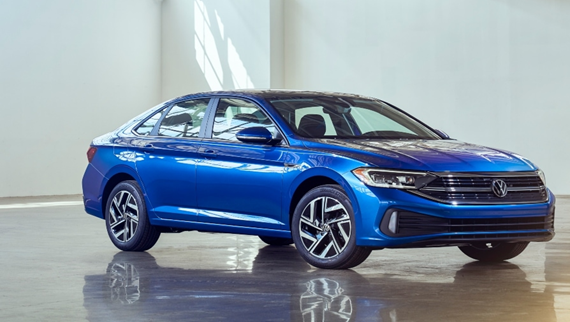
In today’s digital age, the advent of 5G technology has sparked a revolution across various industries, and the automotive sector is no exception. With the promise of ultra-fast speeds and minimal latency, 5G is poised to transform the way we experience connectivity in our vehicles. That Content is created by Cash For Cars Brisbane company.
What is 5G?
5G, or fifth-generation wireless technology, represents the latest evolution in mobile communications. It offers significantly faster data speeds and greater network capacity compared to its predecessors, enabling a wide range of innovative applications and services.
Importance of Connectivity in Cars
The integration of connectivity features in cars has become increasingly vital, as consumers demand seamless access to information, entertainment, and safety features while on the road. From GPS navigation to real-time traffic updates, connected cars have revolutionized the driving experience.
Evolution of Connected Cars
Over the years, connected cars have evolved from basic telematics systems to sophisticated platforms capable of supporting advanced applications and services. The transition from 2G to 5G has played a pivotal role in driving this transformation.
From 2G to 5G
Early connected car systems relied on 2G networks for communication, offering limited bandwidth and slow data speeds. However, with the introduction of 3G and 4G technologies, the capabilities of connected cars expanded significantly, paving the way for more sophisticated features such as remote diagnostics and over-the-air software updates.
Advancements in Technology
The transition to 5G represents a quantum leap in connectivity, offering speeds up to 100 times faster than 4G networks and virtually eliminating latency. This breakthrough technology unlocks a wealth of possibilities for connected cars, enabling real-time communication and interaction with the surrounding environment.
Read About Car Removal Brisbane
How 5G is Revolutionizing Connected Cars
The deployment of 5G networks is poised to revolutionize the automotive industry in several key areas.
Faster Speeds and Reduced Latency
One of the most significant benefits of 5G technology is its ultra-fast data speeds and minimal latency, allowing for near-instantaneous communication between vehicles and the cloud. This enables a host of new applications, such as high-definition streaming, augmented reality navigation, and immersive in-car entertainment.
Enhanced Safety Features
5G connectivity facilitates the implementation of advanced safety features in connected cars, such as collision avoidance systems, pedestrian detection, and adaptive cruise control. By leveraging real-time data from sensors and other vehicles, connected cars can anticipate potential hazards and react accordingly, thereby reducing the risk of accidents.
Improved Navigation and Infotainment
With 5G connectivity, drivers can enjoy seamless access to up-to-date maps, traffic information, and points of interest, enhancing the navigation experience. In addition, advanced infotainment systems powered by 5G enable passengers to stream multimedia content, interact with virtual assistants, and stay connected to their digital lives while on the go.
Vehicle-to-Vehicle Communication
5G enables direct communication between vehicles, known as vehicle-to-vehicle (V2V) communication, allowing them to exchange data about their speed, position, and direction of travel. This enables cooperative driving scenarios, such as platooning, where vehicles can travel closely together in a coordinated manner, improving traffic flow and fuel efficiency.
Impact on the Automotive Industry
The widespread adoption of 5G technology is reshaping the automotive industry in profound ways.
Opportunities for Innovation
5G opens up new opportunities for innovation and differentiation in the automotive sector, enabling manufacturers to develop cutting-edge features and services that enhance the driving experience. From advanced driver assistance systems to autonomous vehicle technology, 5G is driving the next wave of automotive innovation.
Changes in Business Models
The shift to connected and autonomous vehicles powered by 5G is also driving changes in traditional automotive business models. Manufacturers are increasingly focusing on providing mobility services rather than just selling vehicles, leading to new partnerships and collaborations across the industry.
Challenges and Concerns
While 5G holds immense promise for the future of connected cars, it also presents several challenges and concerns that need to be addressed.
Security and Privacy Issues
As connected cars become more reliant on 5G networks and cloud-based services, they also become more vulnerable to cyberattacks and data breaches. Ensuring the security and privacy of sensitive information transmitted between vehicles and the cloud is paramount to building trust among consumers.
Infrastructure Requirements
The widespread deployment of 5G networks will require significant investment in infrastructure, including the installation of new base stations and upgrading existing infrastructure to support the increased data traffic. Ensuring ubiquitous coverage and reliability will be crucial to realizing the full potential of 5G-enabled connected cars.
Future Prospects
Looking ahead, the future of connected cars powered by 5G holds immense promise for transforming the way we live, work, and travel.
Integration with Autonomous Vehicles
5G connectivity will play a pivotal role in the development and deployment of autonomous vehicles, enabling real-time communication between vehicles, infrastructure, and other road users. This seamless connectivity is essential for ensuring the safe and efficient operation of self-driving cars in complex urban environments.
Potential Applications
Beyond traditional transportation, 5G-enabled connected cars have the potential to revolutionize a wide range of industries, from logistics and delivery services to healthcare and entertainment. By leveraging the power of 5G technology, connected cars can become integral components of smart cities and connected ecosystems.
Conclusion
In conclusion, the advent of 5G technology is revolutionizing the automotive industry, unlocking new levels of connectivity, safety, and innovation in connected cars. With faster speeds, reduced latency, and enhanced communication capabilities, 5G is paving the way for a future where cars are not just modes of transportation but intelligent, connected platforms that enrich our lives in countless ways.
visit: https://www.cashforcarbrisbane.com.au/cash-for-cars-ipswich/
FAQs
-
How does 5G improve the safety of connected cars? 5G enables real-time communication between vehicles, allowing them to exchange data about their surroundings and anticipate potential hazards, thereby enhancing safety features such as collision avoidance and pedestrian detection.
-
What are some potential privacy concerns associated with 5G-enabled connected cars? Privacy concerns may arise due to the collection and transmission of sensitive data, such as location information and vehicle diagnostics, over 5G networks. Manufacturers must implement robust security measures to protect this data from unauthorized access and misuse.
-
How will 5G impact the automotive industry’s business models? The shift to connected and autonomous vehicles powered by 5G is driving changes in traditional automotive business models, with manufacturers focusing more on providing mobility services and forging partnerships to deliver innovative solutions.
-
What infrastructure is needed to support 5G-enabled connected cars? The widespread deployment of 5G networks requires significant investment in infrastructure, including the installation of new base stations and upgrading existing infrastructure to support the increased data traffic and ensure ubiquitous coverage.
-
What are some potential applications of 5G-enabled connected cars beyond transportation? Beyond traditional transportation, 5G-enabled connected cars have the potential to revolutionize industries such as logistics, healthcare, and entertainment, by enabling new services and applications that leverage the power of ultra-fast connectivity.








